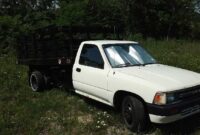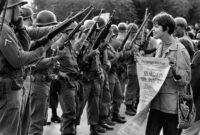1960s Ford Pickup Trucks For Sale: A Comprehensive Buyer’s Guide pickup.truckstrend.com
The roar of a classic V8, the iconic lines, and the undeniable sense of American heritage – there’s something truly captivating about a 1960s Ford pickup truck. More than just utilitarian workhorses, these F-Series trucks have transcended their original purpose to become highly sought-after collector’s items, restoration projects, and beloved daily drivers. Whether you’re a seasoned classic car enthusiast or a newcomer drawn to their timeless appeal, the market for 1960s Ford pickups is vibrant and diverse. This comprehensive guide will navigate you through everything you need to know about finding, evaluating, and purchasing your dream vintage Ford truck.
The Enduring Appeal of 1960s Ford Pickups
1960s Ford Pickup Trucks For Sale: A Comprehensive Buyer’s Guide
What makes a 1960s Ford F-Series so special? It’s a blend of robust engineering, distinctive styling, and a powerful wave of nostalgia. These trucks represent an era of American manufacturing where durability was paramount and design had character. They evoke images of simpler times, of hardworking individuals, and the open road.
The F-Series, particularly the F-100, F-250, and F-350 models from this decade, are celebrated for their:
- Classic Aesthetics: From the unique "Unibody" design of early 4th generation models to the "Bumpside" styling of the 5th generation, each year boasts distinctive features that set it apart.
- Mechanical Simplicity: These trucks were built with straightforward, accessible mechanics, making them relatively easy to maintain, repair, and even modify for the average enthusiast.
- Robust Construction: Known for their sturdy frames and durable powertrains, many of these trucks are still on the road today, a testament to their build quality.
- Versatility: Whether destined for a full frame-off restoration, a rat rod conversion, a reliable daily driver, or a weekend hauler, these trucks offer immense potential.
- Strong Community: A passionate community of owners and restorers provides invaluable support, parts availability, and shared knowledge.

Their enduring popularity has led to a steady increase in value, making them not just a passion purchase but potentially a sound investment.
Identifying Your Ideal 1960s Ford F-Series
The 1960s saw two distinct generations of the Ford F-Series:
Fourth Generation (1961-1966)

This era introduced a significant styling departure.
- 1961-1963 "Unibody": Perhaps the most distinctive of the decade, these models featured the cab and bed integrated into a single, continuous body structure. While innovative, it proved less popular due to perceived flex and body integrity issues, leading Ford to revert to the traditional separate cab and bed mid-decade. These "Unibodies" are now quite rare and highly collectible.
- 1964-1966 Traditional: Ford returned to the separate cab and bed configuration, offering a more conventional and widely accepted design. These trucks retained the general styling cues of the early 4th gen but with improved practicality.
- Key Characteristics: Round headlights, prominent grilles (varying by year), and a relatively sleek profile compared to later models.
- Engine Options: Common engines included the 223 and 262 cubic inch inline-sixes, and the 292 Y-block V8. Later models introduced the more modern 240 and 300 cubic inch inline-sixes, and the 352 FE V8.
- Models: F-100 (half-ton), F-250 (3/4-ton), F-350 (1-ton). Styleside (smooth bed walls) and Flareside (fendered bed, often called "stepsides") options were available.

Fifth Generation (1967-1969)
Often affectionately known as "Bumpsides" due to their prominent side body lines, these trucks represented a more modern and squared-off design.
- Key Characteristics: Wider stance, more comfortable cabs, integrated headlights within a wider grille, and a more robust appearance.
- Engine Options: Continued with the reliable 240 and 300 inline-sixes, and expanded V8 options including the 352, 360, and 390 cubic inch FE series engines, offering more power and torque.
- Models & Trims: F-100, F-250, F-350 were standard. New trim levels like "Ranger" and "Custom Cab" offered more creature comforts and aesthetic upgrades (chrome trim, better interiors). Four-wheel drive (4×4) options became more common and desirable during this period.
When searching for a 1960s Ford pickup, consider which generation’s styling appeals most to you, and what your intended use will be. A "Unibody" might be a showpiece, while a "Bumpside" F-250 4×4 might be your adventure rig.
What to Look For When Buying: An Inspection Guide
Purchasing a vintage truck requires careful inspection. Don’t let nostalgia blind you to potential pitfalls.
-
Rust, Rust, Rust: This is the primary enemy of older vehicles.
- Frame: Check the entire frame for excessive surface rust, perforations, or repairs. Pay close attention to areas around suspension mounting points.
- Cab: Inspect floor pans, rocker panels, cab corners, and the area around the windshield and rear window.
- Bed: Look at the bed floor, inner and outer wheel wells, and the underside of the bed.
- Fenders/Doors: Check lower sections and around hinges.
- Solution: Minor surface rust is manageable. Major structural rust or rot requires extensive, costly repairs or replacement panels.
-
Mechanical Condition:
- Engine: Listen for unusual noises (knocks, clunks, excessive lifter tick). Check for oil leaks, coolant leaks, and smoke from the exhaust (blue = oil, white = coolant, black = rich fuel mixture).
- Transmission: Manuals should shift smoothly without grinding. Automatics should engage gears promptly without harshness or slipping. Check for fluid leaks.
- Brakes: Test for firm pedal feel. Spongy brakes indicate air in the lines or a failing master cylinder. Pulling to one side suggests caliper/wheel cylinder issues.
- Suspension & Steering: Check for worn bushings, ball joints, tie rods. Look for excessive play in the steering wheel. Bounce each corner to check shocks.
- Driveline: Listen for clunks or vibrations from the driveshaft or differentials.
-
Electrical System:
- Test all lights (headlights, tail lights, turn signals, brake lights), wipers, horn, and gauges.
- Look for frayed wires, amateur wiring jobs, or disconnected components.
-
Interior & Exterior:
- Interior: Check seat condition (upholstery, springs), dashboard for cracks, headliner, door panels. Are all original components present?
- Exterior: Assess paint quality (peeling, bubbling, overspray, mismatched panels). Check body panel alignment and gaps. Inspect chrome trim, glass, and weatherstripping.
-
Documentation:
- A clear title is essential.
- Any maintenance records or history of previous ownership can provide valuable insights into the truck’s past.
Practical Advice: Always arrange for a pre-purchase inspection (PPI) by a reputable mechanic specializing in classic vehicles, especially if you’re not mechanically inclined. They can spot issues you might miss.
Restoration vs. Driver: Navigating the Market
The price and condition of 1960s Ford pickups vary wildly, largely depending on whether they are "project," "driver," or "restored" vehicles.
- Project Trucks: These are typically the most affordable, often non-running or requiring significant mechanical and cosmetic work. They are ideal for seasoned restorers or those with a generous budget for professional help. Be prepared for substantial time, effort, and financial investment.
- Driver Quality Trucks: These trucks are generally running, driving, and roadworthy, but may have cosmetic imperfections (patina, minor dents, faded paint) or minor mechanical issues. They are perfect for those who want to enjoy the classic truck experience immediately, or for a rolling restoration project. They offer a great balance of affordability and usability.
- Restored Trucks: These vehicles have undergone professional or meticulous amateur restoration, often to show-quality standards. They command the highest prices, offering a turn-key classic experience. When buying a restored truck, thoroughly vet the quality of the restoration – a poor restoration can hide more problems than it solves.
Market Trends: Short-bed F-100s, 4×4 models, and higher trim levels (like Ranger) generally fetch higher prices. Trucks with desirable engine/transmission combinations (e.g., a 390 V8 with a 4-speed manual) also command a premium. "Patina" trucks – those with original, weathered paint and character – have also become increasingly popular, offering a unique aesthetic without the cost of a full repaint.
Tips for a Successful Purchase
- Set a Realistic Budget: Beyond the purchase price, factor in immediate repairs, insurance, registration, and potential upgrades.
- Do Your Research: Understand the nuances of the specific year and model you’re interested in. What were the common issues? What parts are readily available?
- Don’t Rush: There are many 1960s Ford pickups on the market. Be patient and wait for the right truck at the right price.
- Negotiate: Always negotiate the price. Even fully restored trucks often have some wiggle room.
- Consider Transportation: If buying out of state, factor in the cost of shipping or retrieving the vehicle.
- Leverage the Community: Join online forums (e.g., Ford Truck Enthusiasts, Ford-Trucks.com), Facebook groups, or local classic car clubs. Members often share valuable insights, warn about common scams, and can even help with inspections.
Common Challenges and Solutions
- Parts Availability: While many mechanical and common body parts are readily available through aftermarket suppliers (e.g., LMC Truck, Dennis Carpenter) or reproducers, some specific trim pieces, interior components, or unique "Unibody" parts can be challenging to find.
- Solution: Utilize online classic parts suppliers, salvage yards, eBay, and dedicated Ford truck forums where members often sell hard-to-find items.
- Rust Repair: Extensive rust can be a money pit.
- Solution: For significant rust, seek professional body shop quotes. For minor surface rust, DIY solutions like wire brushing, rust converters, and protective coatings can be effective.
- Modernization vs. Originality: Many owners debate whether to keep their truck entirely original or upgrade components for modern driving comfort (e.g., disc brakes, power steering, air conditioning, engine swaps).
- Solution: Decide your truck’s purpose. If it’s a show truck aiming for originality, keep it stock. If it’s a daily driver, modern upgrades can significantly enhance safety and comfort. Many "restomods" successfully blend classic looks with modern performance.
- Insurance: Standard auto insurance may not cover the true value of a classic truck.
- Solution: Invest in specialized classic car insurance, which often offers agreed-value policies, lower premiums (due to limited mileage), and coverage tailored for vintage vehicles.
1960s Ford Pickup Trucks For Sale: Estimated Price Guide
Please note: Prices are highly variable based on condition, originality, specific model/trim, engine/transmission, location, and seller. These are broad estimates.
| Model / Year Range | Condition: Project (Needs Full Restoration) | Condition: Driver (Running, Roadworthy, Imperfections) | Condition: Restored (Excellent, Show Quality) | Key Considerations |
|---|---|---|---|---|
| 1 | 1960s Ford Pickup Trucks For Sale: A Comprehensive Buyer’s Guide |
The roar of a classic V8, the iconic lines, and the undeniable sense of American heritage – there’s something truly captivating about a 1960s Ford pickup truck. More than just utilitarian workhorses, these F-Series trucks have transcended their original purpose to become highly sought-after collector’s items, restoration projects, and beloved daily drivers. Whether you’re a seasoned classic car enthusiast or a newcomer drawn to their timeless appeal, the market for 1960s Ford pickups is vibrant and diverse. This comprehensive guide will navigate you through everything you need to know about finding, evaluating, and purchasing your dream vintage Ford truck.
The Enduring Appeal of 1960s Ford Pickups
What makes a 1960s Ford F-Series so special? It’s a blend of robust engineering, distinctive styling, and a powerful wave of nostalgia. These trucks represent an era of American manufacturing where durability was paramount and design had character. They evoke images of simpler times, of hardworking individuals, and the open road.
The F-Series, particularly the F-100, F-250, and F-350 models from this decade, are celebrated for their:
- Classic Aesthetics: From the unique "Unibody" design of early 4th generation models to the "Bumpside" styling of the 5th generation, each year boasts distinctive features that set it apart.
- Mechanical Simplicity: These trucks were built with straightforward, accessible mechanics, making them relatively easy to maintain, repair, and even modify for the average enthusiast.
- Robust Construction: Known for their sturdy frames and durable powertrains, many of these trucks are still on the road today, a testament to their build quality.
- Versatility: Whether destined for a full frame-off restoration, a rat rod conversion, a reliable daily driver, or a weekend hauler, these trucks offer immense potential.
- Strong Community: A passionate community of owners and restorers provides invaluable support, parts availability, and shared knowledge.
Their enduring popularity has led to a steady increase in value, making them not just a passion purchase but potentially a sound investment.
Identifying Your Ideal 1960s Ford F-Series
The 1960s saw two distinct generations of the Ford F-Series, each with its unique characteristics and appeal:
Fourth Generation (1961-1966)
This era introduced a significant styling departure for Ford’s truck line.
- 1961-1963 "Unibody": Perhaps the most distinctive and now highly collectible of the decade, these models featured the cab and bed integrated into a single, continuous body structure. While innovative and sleek, this design proved less popular with some commercial buyers due to perceived flex under heavy loads, leading Ford to revert to the traditional separate cab and bed mid-decade. Today, these "Unibodies" are sought after for their unique aesthetic and rarity.
- 1964-1966 Traditional: Ford returned to the separate cab and bed configuration, offering a more conventional and widely accepted design. These trucks retained the general styling cues of the early 4th gen but with improved practicality and a more familiar truck silhouette.
- Key Characteristics: Round headlights, prominent grilles (varying by year, often with horizontal bars), and a relatively sleek, somewhat rounded profile compared to later models.
- Engine Options: Common powerplants included the robust 223 and 262 cubic inch inline-sixes, and the venerable 292 Y-block V8. Later models in this generation introduced the more modern and highly regarded 240 and 300 cubic inch inline-sixes, along with the powerful 352 FE (Ford-Edsel) V8.
- Models: The lineup included the F-100 (half-ton), F-250 (3/4-ton), and F-350 (1-ton). Both Styleside (smooth bed walls) and Flareside (fendered bed, often referred to as "stepsides") options were available, offering different aesthetic and practical choices.
Fifth Generation (1967-1969)
Often affectionately known as "Bumpsides" due to their prominent side body lines that run from front to back, these trucks represented a more modern, squared-off



